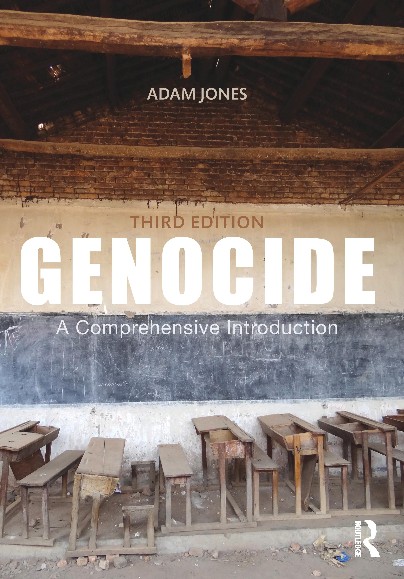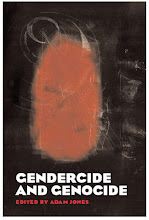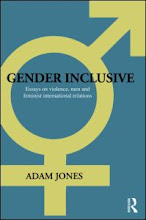 |
| "A family with a wounded boy waited at a United Nations camp to be evacuated for further treatment." (Sven Torfinn/The New York Times) |
By Jeffrey Gettleman
The New York Times, January 12, 2012
"The trail of corpses begins about 300 yards from the corrugated metal gate of the United Nations compound and stretches for miles into the bush. There is an old man on his back, a young woman with her legs splayed and skirt bunched up around her hips, and a whole family -- man, woman, two children -- all facedown in the swamp grass, executed together. How many hundreds are scattered across the savannah, nobody really knows. South Sudan, born six months ago in great jubilation, is plunging into a vortex of violence. Bitter ethnic tensions that had largely been shelved for the sake of achieving independence have ruptured into a cycle of massacre and revenge that neither the American-backed government nor the United Nations has been able to stop. The United States and other Western countries have invested billions of dollars in South Sudan, hoping it will overcome its deeply etched history of poverty, violence and ethnic fault lines to emerge as a stable, Western-friendly nation in a volatile region. Instead, heavily armed militias the size of small armies are now marching on villages and towns with impunity, sometimes with blatantly genocidal intent. Eight thousand fighters just besieged this small town in the middle of a vast expanse, razing huts, burning granaries, stealing tens of thousands of cows and methodically killing hundreds, possibly thousands, of men, women and children hiding in the bush. The raiders had even broadcast their massacre plans. 'We have decided to invade Murleland and wipe out the entire Murle tribe on the face of the earth,' the attackers, from a rival ethnic group, the Nuer, warned in a public statement.
The United Nations, which has 3,000 combat-ready peacekeepers in South Sudan, tracked the advancing fighters from helicopters for days before the massacre and rushed in about 400 soldiers. But the peacekeepers did not fire a single shot, saying they were greatly outnumbered and could have easily been massacred themselves. The attack was presaged by a fund-raising drive for the Nuer militia in the United States -- a troubling sign that behind the raiders toting Kalashnikovs and singing war songs was an active back office half a world away. Gai Bol Thong, a Nuer refugee in Seattle who helped write the militia's statement, said he had led an effort to cobble together about $45,000 from South Sudanese living abroad for the warriors' food and medicine. 'We mean what we say,' he said in an interview. 'We kill everybody. We are tired of them.' (He later scaled back and said he meant they would kill Murle warriors, not civilians.) Such ethnic clashes were unnervingly common here in 2009, before the final push for independence. More ominous than the small-scale cattle raids that have gone on for generations, the attacks often seemed like infantry maneuvers, fueling accusations that northern Sudanese leaders had shipped in arms to destabilize the south. But southerners seemed to rally together as the historic referendum on independence from the north drew near. The exuberance brought reconciliation. Major ethnic clashes all but disappeared. The respite was short lived. Fighting broke out almost immediately along the border between north and south. Then, only a month after South Sudan celebrated its independence last July with a new national anthem and a countdown clock that blared 'Free at Last,' Murle fighters killed more than 600 Nuer villagers and abducted scores of children. That attack set this month's massacre into motion. ... As thousands of Nuer fighters poured into Pibor on Dec. 31, United Nations military observers watched them burn down Murle huts and then march off, in single file lines, into the bush, where many Murle civilians were hiding. Murle leaders have complained that they were abandoned in their hour of need. Neither government forces nor the United Nations peacekeepers left their posts in Pibor to protect the civilians who had fled, and it appears that many Murle were hunted down. Hilde F. Johnson, head of the United Nations mission in South Sudan, said the peacekeepers had warned residents that the fighters were coming. But she argued that the United Nations troops had little choice but to stay on the sidelines. 'Protection of civilians in the rural areas and at larger scale would only have been possible with significantly more military capacity,' she said. The rampage continued until Jan. 3, but the number of dead is far from clear. Joshua Konyi, Pibor's county commissioner and a Murle, said more than 3,000 had died. Several United Nations officials said they doubted that the numbers were that high because so many people had fled Pibor before the attack, but they agreed that scores, if not hundreds, were killed. 'There are bodies everywhere,' said one United Nations official who was not allowed to speak publicly. 'It's a big area, so I wouldn't be surprised by 1,000.' Many survivors spoke of seeing dozens killed in front of their eyes. [...]"














No comments:
Post a Comment
Please be constructive in your comments. - AJ